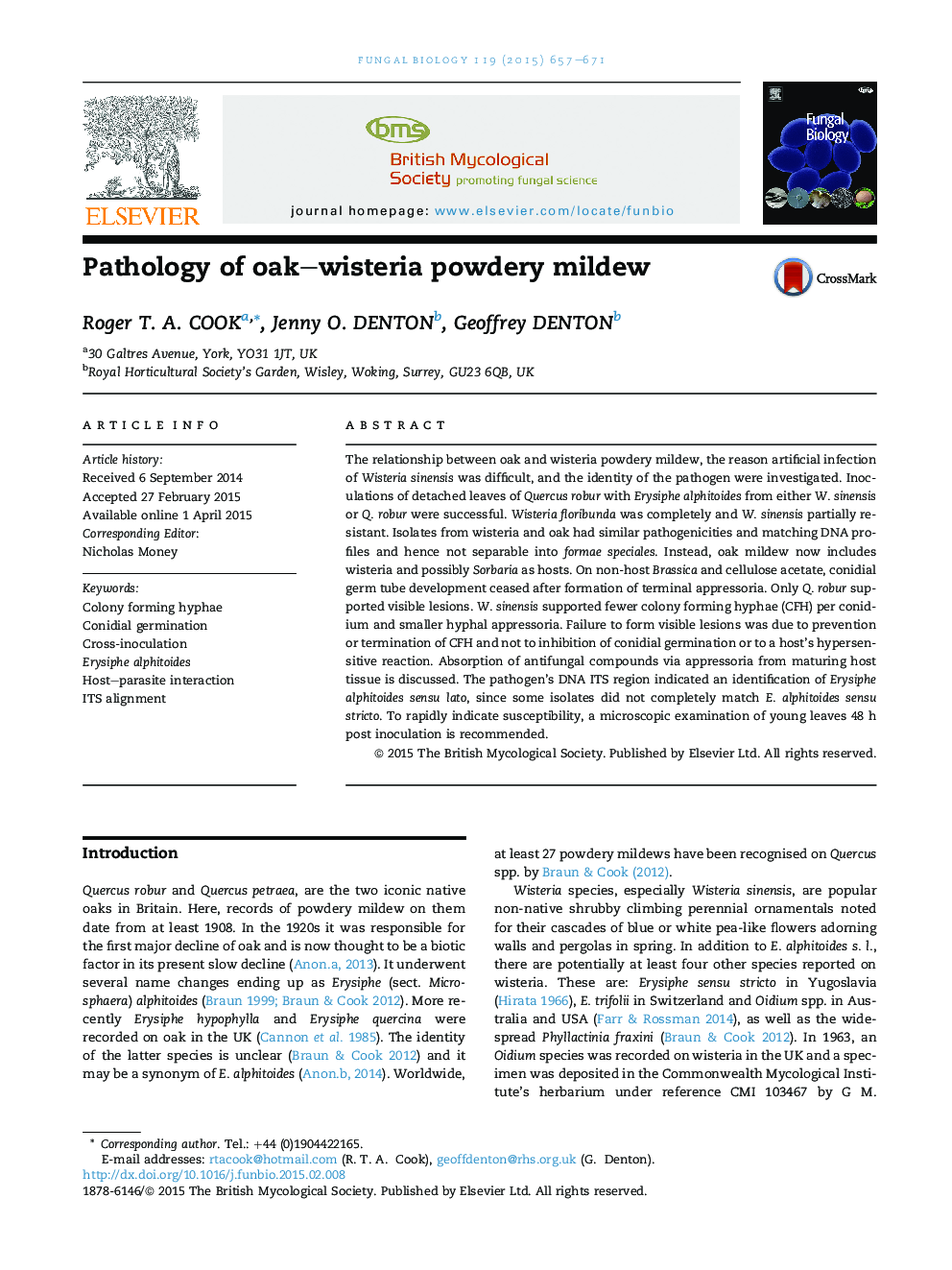| کد مقاله | کد نشریه | سال انتشار | مقاله انگلیسی | نسخه تمام متن |
|---|---|---|---|---|
| 4356871 | 1300005 | 2015 | 15 صفحه PDF | دانلود رایگان |
• Erysiphe alphitoides has extended host range from oak to wisteria.
• DNA analysis showed E. alphitoides both sensu stricto and lato cause the mildews.
• Resistance to E. alphitoides associated with rapid maturity of host tissue.
• Resistance of wisteria to E. alphitoides linked to smaller hyphal appressoria.
• Microscopic examination 48 h post inoculation can determine host susceptibility.
The relationship between oak and wisteria powdery mildew, the reason artificial infection of Wisteria sinensis was difficult, and the identity of the pathogen were investigated. Inoculations of detached leaves of Quercus robur with Erysiphe alphitoides from either W. sinensis or Q. robur were successful. Wisteria floribunda was completely and W. sinensis partially resistant. Isolates from wisteria and oak had similar pathogenicities and matching DNA profiles and hence not separable into formae speciales. Instead, oak mildew now includes wisteria and possibly Sorbaria as hosts. On non-host Brassica and cellulose acetate, conidial germ tube development ceased after formation of terminal appressoria. Only Q. robur supported visible lesions. W. sinensis supported fewer colony forming hyphae (CFH) per conidium and smaller hyphal appressoria. Failure to form visible lesions was due to prevention or termination of CFH and not to inhibition of conidial germination or to a host's hypersensitive reaction. Absorption of antifungal compounds via appressoria from maturing host tissue is discussed. The pathogen's DNA ITS region indicated an identification of Erysiphe alphitoides sensu lato, since some isolates did not completely match E. alphitoides sensu stricto. To rapidly indicate susceptibility, a microscopic examination of young leaves 48 h post inoculation is recommended.
Journal: Fungal Biology - Volume 119, Issue 8, August 2015, Pages 657–671
